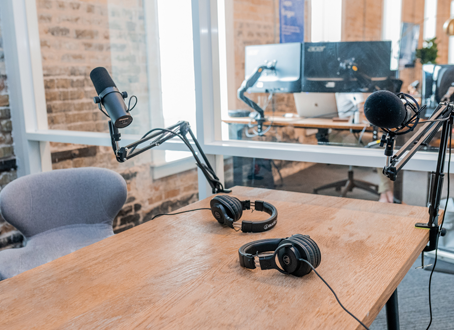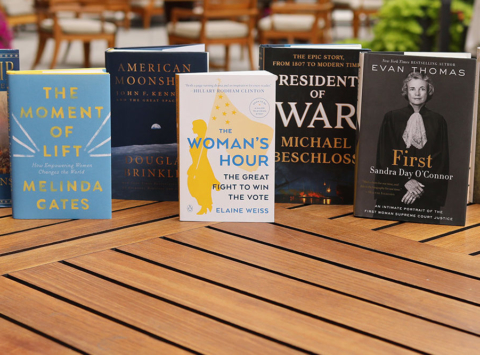Over the past twenty years, the Case Foundation has created, implemented and led a wide variety of initiatives, nearly all together with a vast portfolio of partners. In our efforts to “invest in people and ideas that can change the world,” we’ve brought a desire for scale and impact in everything we do. As we celebrate our twenty-year history and look back on the lessons we have learned, we realize that while our focus has been on making big bets, we have seen transformative power in “going local and getting personal” as an approach to addressing daunting challenges.
What do I mean by this? In my earliest days in philanthropy, I knew I had much to learn (I still do, by the way). I was struck by the passion and commitment of those working in the social sector—the public, nonprofit and philanthropic arenas. But I was also struck by how often new solutions being proposed for communities didn’t have the voice of a local, or the personal voice of the very people whose problems the solutions were aiming to address. We saw many examples of solutions drawn up by professionals sitting under fluorescent lights too often removed from the realities of those living the problems.
In 2006, we commissioned research that resulted in a report called “Citizens at the Center: A New Approach to Civic Engagement.” The research found that individuals often felt disconnected from public leaders and civil society organizations. It promoted an approach that included engaging those being served to more effectively solve problems and improve lives in their communities. This approach puts the community and stakeholders at the center of any program, problem to be solved or decision-making process and, I think, shines through in all of our work over the past twenty years.
As we look at our divided nation today, we know there is a great desire among many segments of society to feel both included and heard on matters affecting their lives and their future. Indeed, there is plenty of data to suggest that the divide itself has been driven by a sense of disenfranchisement from sectors of society across the nation. By ensuring communities and individuals are at the heart of programs and initiatives designed to address their needs, new “onramps” and opportunities can be created for more robust citizen engagement, which in turn should lead to more effective impact across society.
In our own work at the Case Foundation, we have been intensely focused on engaging stakeholders across our initiatives, and we have promoted platforms and programs that better enable citizen engagement. For example:
-
- When we sought to address the digital divide through one of our earliest initiatives, PowerUp, we did so with a wide range of partners, including the Boys & Girls Clubs of America, local faith-based organizations, the YMCA and community centers. We enabled each locality to craft their own venues and programs to meet the specific needs of their community. The result? A web of diverse after-school technology centers in 1000 communities across the nation. The key was standardizing elements that enabled scale, while not losing the ability of communities to make it their own.
-
- In 2007, we launched The Make It Your Own Awards, challenging people from all walks of life to discuss what matters most to them, decide what kind of community they want, and then take action together. With more than 4,600 applicants, the program drew a diverse set of both individuals and small community based organizations, many of whom had never applied for foundation funding to support their work. What’s more, the program involved the public in nearly every aspect of the decision-making process and design—and as one of the first grant programs decided by public vote, more than 15,000 votes were cast to help name the Top 20 projects. Make It Your Own was also an opportunity to help all 4,600+ applicants understand the latest (at the time) social media tools to help empower them to raise funds and rally supporters whether or not they were successful in receiving funding from the Foundation. The impact was impressive as we found that more than half of the grantees had achieved concrete and significant outcomes at the two-year mark.
-
- Even campaigns that were based in Washington, DC, such as the White House Summit on Innovation that we co-hosted, were grounded in the idea that innovative ideas from local communities and audiences were needed to improve government performance. The program pushed 35 U.S. government agencies to use contests and grand challenges to tap “entrepreneurial spirit” across the nation in finding solutions to major challenges faced by government agencies. And it was innovators from the private sector and citizens from communities across the country that responded with great ideas from new perspectives. Since its launch in 2010, 740 challenges have been run on Challenge.gov—the site that grew out of that initial effort—eliciting entries from 250,000+ citizens from all 50 states.
- Even in the realm of science and exploration, we are seeing an explosion of citizen engagement. A new generation of scientists and explorers are tying their work and data collection to local communities, often looking to non-scientists for inputs. Whether it is tracking radiation levels in oceans near nuclear plants, high school science classes transmitting their daily environmental observations, communities working together to track wild animal migrations so both wild and domesticated animals can coexist or citizens setting aside one day a year to count birds for the Great Backyard Bird Count, the data collected by non-scientists about their communities is integral to much of the scientific work taking place today. And the scientists see value in grounding that data in the human experience. This connection provides context, but also democratizes science so that anyone, anywhere can be part of the scientific process. The scientists and explorers I know see this as a wonderful development that, they hope, will lead to more broad-based support both for science and for exploration.
Some believe that to move past the stalemates in Washington, we need to go local and follow the lead of cities and states who are engaging their citizens and finding innovative approaches to daunting challenges. Mayors can’t grow detached from the citizens they serve, nor can a Governor survive by ignoring the priorities of his/her state. No matter where leaders sit, failure to engage citizens and think about local impact, undermines even the best-intentioned initiatives. By more actively engaging citizens to build a better world, we will accelerate and expand opportunities for lasting impact. At the Case Foundation, we are committed to continuing to keeping “citizens at the center” in all we do.





